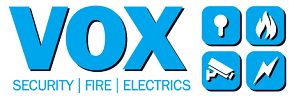In the UK all business premises, every block of flats, and landlords must have a Fire Risk Assessment by law, yet many business owners do not understand the importance of fire safety measures.
Sadly Fire Risk Assessments are often overlooked, which can often lead to buildings being exposed unnecessarily to risks of fires, sometimes resulting with the potential for loss of life.
what is a Fire Risk Assessment?
In simple terms, it is a basic review taken of a building or property to assess it for fire risks, and to provide a full list of recommendations to make it safer for the people in the building.
What are the UK legal guidelines around a Fire Risk Assessment?
There are some very specific guidelines concerning Fire Risk Assessments.
- It must be reviewed regularly.
– At 12 monthly intervals following the original assessment
– If the fabric of the building has changed e.g. the layout has altered
– If the purpose of the building has altered substantially
– If the nature of the occupants has changed considerably
Changes in the layout of the building, the use of it, or the type of occupant can make a big difference to your fire safety plans, so it’s important to conduct a Fire Risk Assessment review if any of these take place.
- It must be written down if there are 5 or more regular occupants.
If your business premises or block of flat usually has more than 4 residents at any one time, then you must legally document your Fire Risk Assessment.
There are other circumstances in which your Fire Risk Assessment must be written down even if you have fewer than 5 regular occupants
– If the premises need a licence or
– The fire brigade has instructed you to (following a visit, for example)
- It must record the main findings and the actions to be taken
One is the review itself, which will assess the fire safety of the premises against a number of points.
Who is responsible for Fire Risk Assessments?
By law, every business or landlord must have a designated ‘Responsible Person’, accountable for fire safety.
Their job to make sure all the relevant fire safety duties are carried out correctly and that all actions are taken to prevent fires from starting, also to prevent injury or death in the event of an actual fire.
It is, therefore, the Responsible Person who should make sure your building has a valid Fire Risk Assessment.
Have More Questions?
If you are unsure if you need a Fire Risk Assessment or if you have one in place then it is best to consult a professional company to advise on the best way forward. We are happy to discuss your particular requirements, give us a call or message to find out more information.
